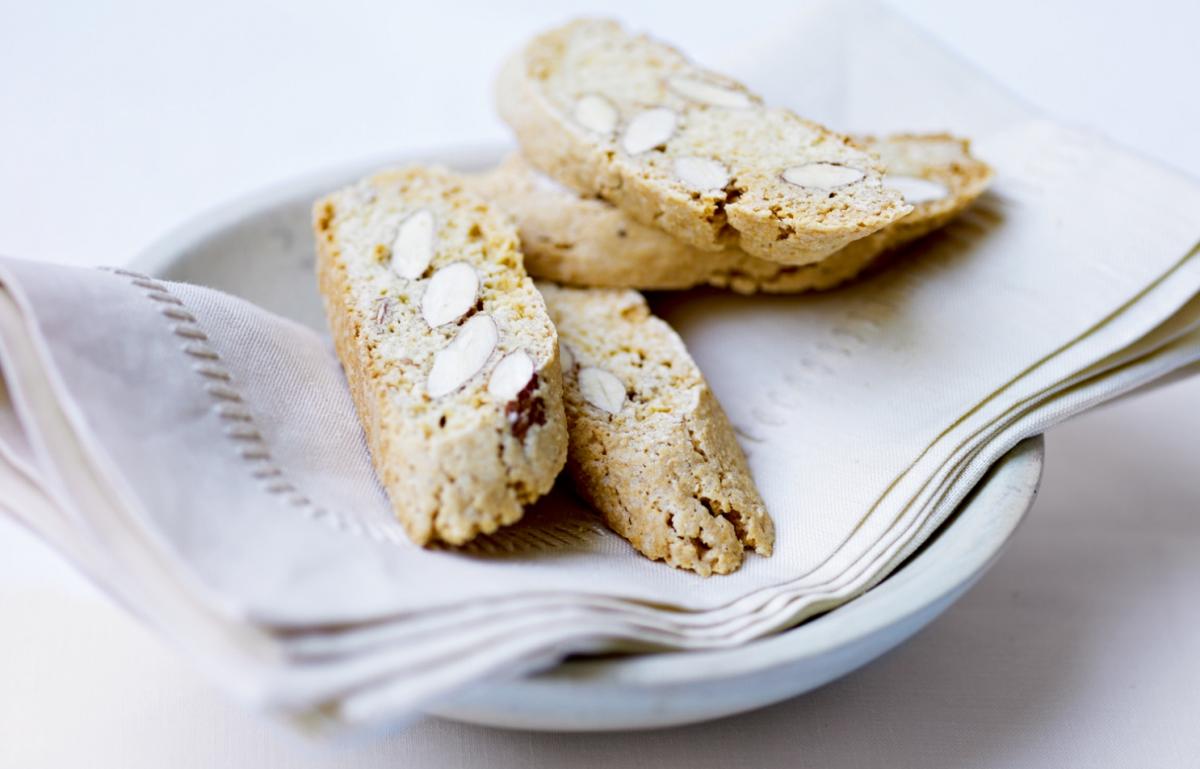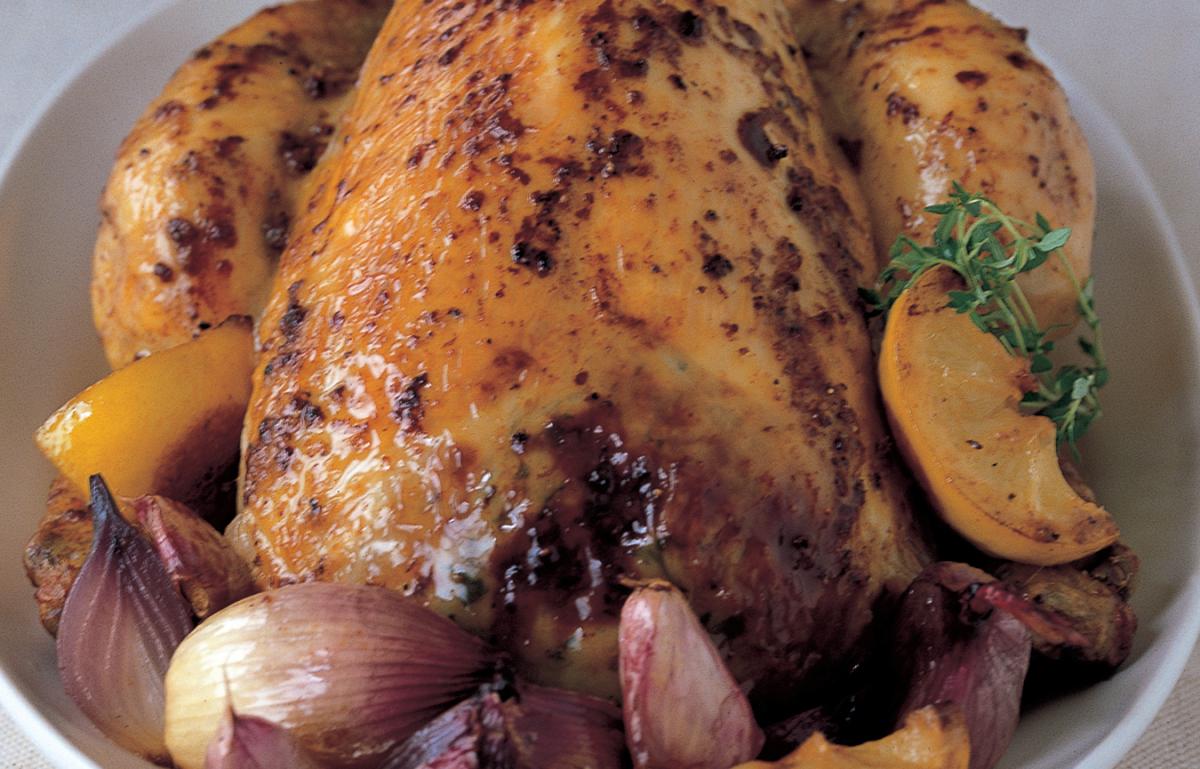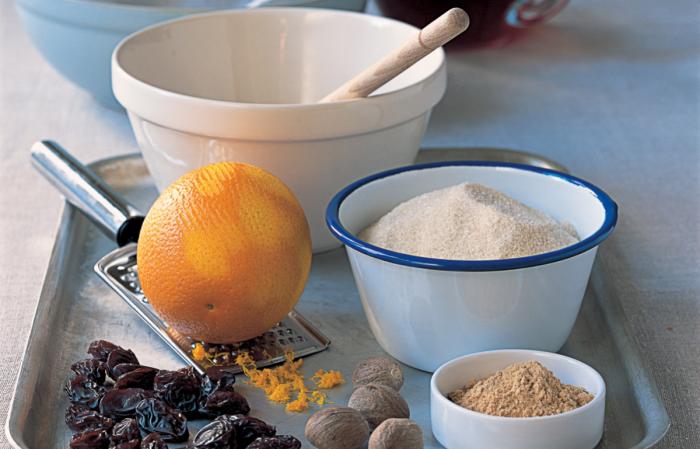


Q: I've been trying to track down a type of nougat called turrón for one of your recipes but I cannot find it anywhere – can you help?
Unfortunately, turrón, which was available in Sainsbury's and other supermarkets, has all but disappeared from the shelves. I suggest that you look in specialist food shops or small Spanish/Italian delicatessens to find it. Alternatively, any type of nougat can be used as a substitute.
Q: How do I know what type of chocolate to use for cooking?
If you are going to eat chocolatey desserts and cakes, then I do think they should taste genuine rather than synthetic. The quality of chocolate is judged by the amount of cocoa solids (or cocoa butter) it contains – the highest available is usually 75 per cent, which gives a very dark chocolate. White chocolate is at the other end of the scale and can vary from 30 per cent to almost nil. The lower the cocoa solids, the less satisfactorily the chocolate will melt. I suggest that you look on the back of the packet. If the cocoa solids (or butter) content is not listed, then look at another brand, avoiding those with a high proportion of vegetable fats.
![[object Object]](https://www.deliaonline.com/sites/default/files/quick_media/ingredient-cakes-chocolate.jpg)
Q: Can I use foil to cover individual Christmas puddings during cooking?
I wouldn't recommend cooking and storing the puddings in aluminium foil as the fruit reacts with the foil. It is far preferable to use greaseproof paper topped with a layer of foil. Take two sheets of greaseproof paper and top with one of foil, make a pleat in the middle to allow for expansion during cooking and cover the puddings, foil side uppermost, and tie securely with string.
Q: When melting chocolate with a high cocoa content, why does it sometimes separate?
Chocolate separating has nothing to do with the percentage of cocoa solids it contains – in fact, the purer the chocolate, the harder it is to split as there is no less or no additional fat beyond the existing cocoa butter specified in the cocoa solid volume. Most chocolate contains 35–75% cocoa solids. The two things that cause chocolate to separate are when water gets in to the chocolate being melted, which is why you have to be careful when melting chocolate over a pan of simmering water. However, butter, cream alcohol etc all contain water, so must be added with caution too when melting. Separation can also be caused by overheating when melting any chocolate containing additional fat to the cocoa butter. This means that plain chocolate with no additional fat is difficult to split, while milk and white chocolate are easy to split as they contain milk and other vegetable fat. To melt chocolate, fill a saucepan with about 1 inch (2.5 cm) of water and sit a heatproof bowl (preferably Pyrex) snuggly on the top but do not allow the bottom of the bowl to touch the water. Break the chocolate up in the bowl, bring the water to a simmer and then remove the pan from the heat. Stir from time to time as the rising steam melts the chocolate. Alternatively, and this is the safest option, as no water can get in, melt it in the microwave at full power for short bursts, stirring in between. The first burst should be about 35 seconds, followed by bursts of 20 seconds until melted.
Q: It might sound obvious, but do I have to buy whipping cream for whipping?
Only double cream (or whipping cream) is suitable for whipping. Take care not to over-whip though, as this can make the cream look curdled and it won't fold into anything (untreated Jersey cream is prone to this). If you have to fold cream into anything, beat it only to the 'floppy' stage. For piping it has to be slightly stiffer – beat until peaks are left when you lift the whisk (but again, don't overdo it).
![[object Object]](https://www.deliaonline.com/sites/default/files/quick_media/ingredient-puddings-cream.jpg)
Q: Is there a trick to removing the fiddly little stalks out of small fruit such as blackcurrants and redcurrants?
Hold the tip of each stalk between your finger and thumb and slide it between the prongs of a fork – pushing the fork downwards, so pulling off the berries as it goes.
Q: Is there a way I can be sure of success with powdered gelatine?
Always ensure that gelatine is properly dissolved – failure to do so is perhaps the commonest cause of problems. Sprinkle it into a small basin containing 3–4 tablespoons of liquid and leave it to soak for a few minutes. Then place the basin in a pan of barely simmering water and allow it to dissolve completely – you can test this by dipping in a teaspoon and turning it over to see any undissolved granules. Don't let the mixture get too hot. Strain the mixture before using it.
Q: Why do you always recommend whole candied peel rather than the more readily available ready-cut peel?
If you buy this whole and cut it as you need it, you will find it has a great deal more flavour than the ready-cut peel. It will keep almost indefinitely in a screw-top jar, so it is worth buying a stock of it when it is readily available at Christmas time. If you can't find it in your local supermarket, try a specialist food shop or health food store.
Q: When making tiramisu, the mixture split and curdled when I added the mascarpone. Where did I go wrong?
Ensure that your eggs are at room temperature and not straight from the fridge. Separate the eggs and whisk the yolks with the sugar before adding to the mascarpone very slowly – a little at a time as if you were making a cake by the creaming method. This should prevent the mixture from splitting. See Delia's Tiramisu recipe below.
![[object Object]](https://www.deliaonline.com/sites/default/files/quick_media/ingredient-italian-mascarpone.jpg)
Q: What's the difference between crème de marrons and chestnut purée, and are they interchangeable in recipes?
These are different products, the crème de marrons is puréed candied chestnut that has a high syrup content and chestnut purée is cooked and puréed chestnuts with no sweeteners added. The syrup in the crème de marrons will prevent it from freezing rock solid and so is very useful in recipes such as my frozen desserts and puddings where a smoother texture is required.
Q: I have made the same chocolate mousse recipe for ages (very similar to yours). Of late it has been of a very stiff consistency and not half as nice as usual. Can you please tell me why this should be?
When cooking with chocolate there are a number of rules to follow to ensure success – click on How To Melt Chocolate, below, for Delia's instructions. This will help you to avoid overheating the chocolate, which, in turn, will make it stiff and granular. Also, it is important to fold in the egg whites very carefully to avoid losing all the precious air that you've so carefully whisked in. Have a look at How to Whisk Egg Whites for more information.
How to melt chocolate
How to whisk egg whites
Q: I have been asked to cook a syrup pudding with suet but which, if the memory of my guest is correct, was crunchy on the outside and soft on the inside. I've tried but haven't been able to find anything that might fit the bill. Of course my guest might have a memory defect! Any ideas?
We have spoken to Delia and she has told us all she knows about syrup puddings! Usually such a pudding will have syrup in the base of the bowl, with the uncooked mixture on the top. When the pudding is turned out after steaming, the syrup trickles down the sides – thus the pudding is not usually crisp on the outside. Delia's recipe for Steamed Treacle Sponge Pudding is like this. Another type of pudding is made with suet pastry – this may be the one you are thinking of.
Q: How can I tell when to take the cream custard off the heat when making crème brûlée? It never seems to set but I am scared of letting it boil.
When cooking with chocolate there are a number of rules to follow to ensure success – click on How To Melt Chocolate, below, for Delia's instructions. This will help you to avoid overheating the chocolate, which, in turn, will make it stiff and granular. Also, it is important to fold in the egg whites very carefully to avoid losing all the precious air that you've so carefully whisked in. Have a look at How to Whisk Egg Whites for more information.
How to melt chocolate
How to whisk egg whites
Delia talks in detail about making custard in our Online Cookery School, and you find out How to Make Custard here. Also have a look at Delia's recipe for Chocolate Crème Brûlées below, for more information. In general, keep whisking the custard over a gentle heat until it thickens – it won't hurt if it boils a little if it contains cornflour, as most of Delia's recipes for custard do. This makes the custard mixture much more 'well behaved' and easier to work with.
Q: I am making your Individual Chocolate Puddings for 12 people so I added another half to all the ingredients in your recipe to increase from eight to 12 servings but when putting the mixture into the pudding basins (bought from Lakeland as the ones you use) I could only fill nine. My thought is that maybe I folded in too quickly and therefore lost some of the bulk. I have always found your recipes correct and wonderful.
Did you perhaps fill your pudding basins too full? This could account for the reduced number. Also, you may be right in saying that you lost volume when folding the mixture together – it is important to take great care when doing this. As Delia says in the recipe, 'patience is needed here; don't be tempted to hurry it, as careful folding and cutting movements are needed, and this will take 3-4 minutes.'
Q: Is there a substitute for using bananas in the Caribbean Banana and Rum Syllabub recipe?
Delia's recipes are developed and tested very carefully to give the best possible combination of flavours and textures. Changing one of the key ingredients will obviously alter the character of the dish quite considerably – you will finish up with quite a different result. That said, you could try substituting peaches or nectarines for the bananas. You would need to increase the cooking time of the fruit by about 10 minutes.
Q: I have made your lemon meringue pie twice but both times the lemon filling has not set. Any ideas please?
We are very sorry that you were disappointed with the Lemon Meringue Pie, the juice of 2 large lemons is the correct amount. The filling must be brought to the boil and simmered gently until thick before pouring into the pastry case. Also the recipe has been updated since it was published in The Complete Cookery Course, see the updated version below: To prevent the base from going soggy you can use a metal baking tin.
Follow us Like us on Facebook Follow us on twitter Follow us on instagram Follow us on pinterest Follow us on youtube
© 2001-2024 All Rights Reserved Delia Online